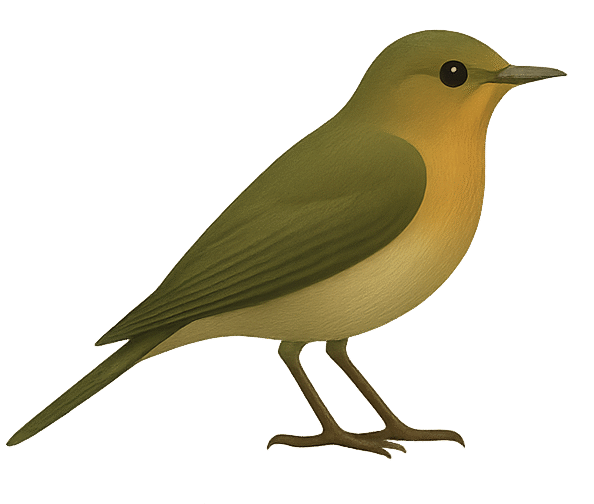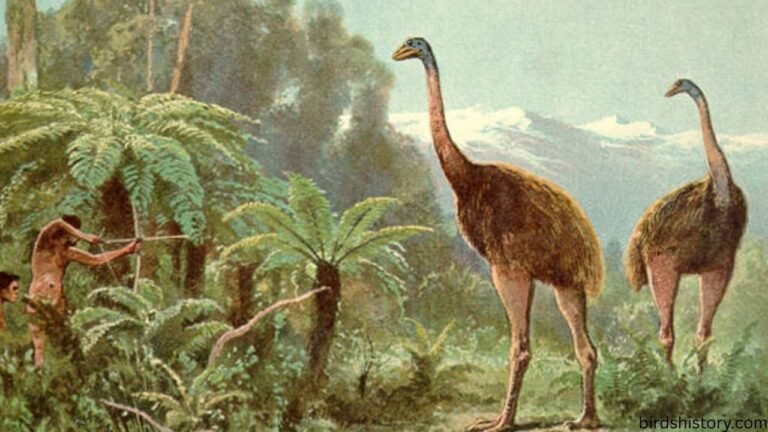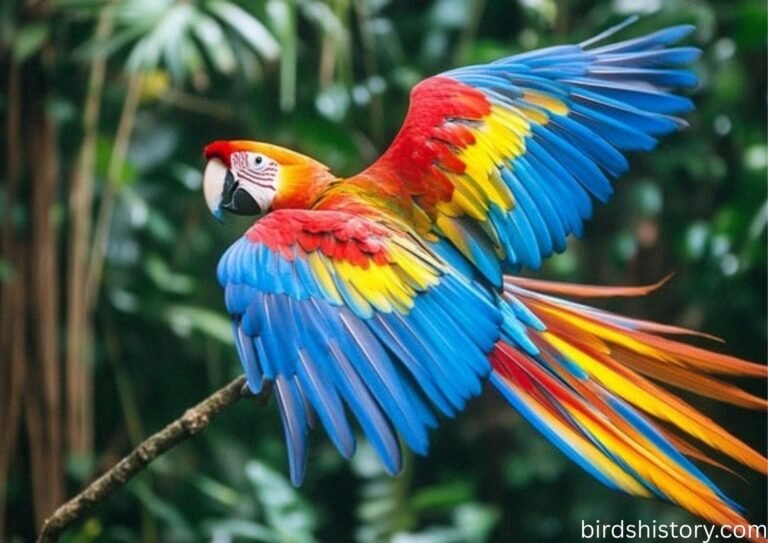Southern Cassowary: The Mysterious Guardian of the Rainforest
Few birds on Earth are as fascinating—or as intimidating—as the Southern Cassowary. Often referred to as the “world’s most dangerous bird,” this striking flightless giant roams the tropical rainforests of Northern Australia, New Guinea, and nearby islands.
But beyond the headlines and dramatic reputation, the Southern Cassowary (Casuarius casuarius) is also a keystone species, playing a critical role in rainforest ecology by spreading seeds of countless plant species. Many rainforests would not be the same without cassowaries.
One surprising fact? The cassowary is an excellent swimmer. Despite its large size and inability to fly, it can cross rivers and even swim in the ocean to move between habitats.
This article will walk you through everything you need to know about the Southern Cassowary—from its classification and physical description to its lifestyle, threats, and conservation status. By the end, you’ll understand why this unusual bird deserves both respect and protection.
Taxonomy / Classification
Let’s start by placing the Southern Cassowary in the scientific hierarchy:
Also read: /the-wilsons-bird-of-paradise/
- Common Name: Southern Cassowary
- Scientific Name: Casuarius casuarius
- Family: Casuariidae
- Order: Casuariiformes
- Class: Aves
The Southern Cassowary belongs to a group of large, flightless birds called ratites, which also includes ostriches, emus, and kiwis. Among cassowaries, there are three recognized species: the Southern Cassowary, the Northern Cassowary, and the Dwarf Cassowary. Of these, the Southern Cassowary is the largest and most well-known.
Physical Description
The Southern Cassowary has an unmistakable and almost prehistoric appearance, making it one of the most unique birds on the planet.
- Size:
- Height: Up to 2 meters (6.6 ft) tall.
- Weight: Between 35–76 kg (77–167 lbs), with females significantly larger.
- Plumage:
- Black, coarse, hair-like feathers that provide insulation in tropical environments.
- Head and Neck:
- It has vividly colored skin in shades of blue, purple, and red.
- Long red wattles (skin flaps) hanging from the throat.
- Casque (Helmet):
- A bony crest on the top of the head, which can grow up to 17 cm.
- Functions may include sound amplification, dominance display, or protection when moving through dense vegetation.
- Legs and Claws:
- Strong, muscular legs built for running and kicking.
- Each foot has three toes, with the inner claw resembling a dagger, up to 12 cm (5 inches) long.
- This claw is the reason cassowaries have the reputation of being dangerous—they can deliver powerful kicks if threatened.
- Sexual Dimorphism:
- Female cassowaries are bigger, heavier, and have more vivid coloring than the males.
- Males are smaller and take on the parenting role.
Overall, the Southern Cassowary looks like a creature from another era, often described as “a bird that survived from the age of dinosaurs.”
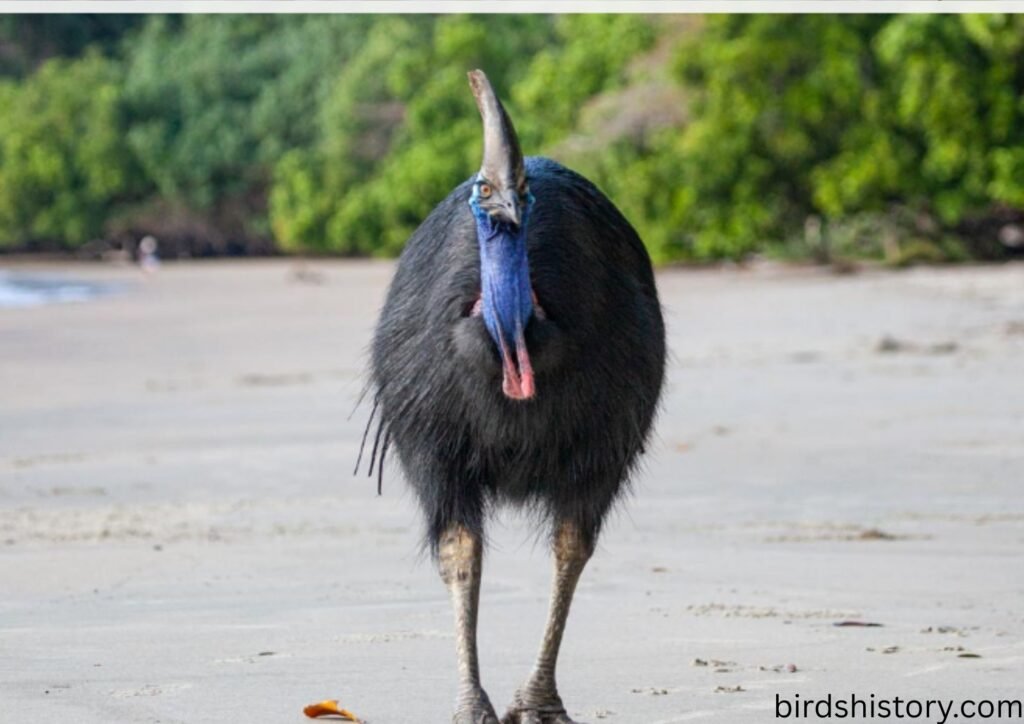
Habitat and Range
The Southern Cassowary is primarily found in tropical rainforests but is surprisingly adaptable.
- Geographic Range:
- Northern Australia (Queensland rainforests)
- New Guinea
- Aru Islands
- Ceram Island
- Preferred Habitat:
- Dense lowland tropical rainforests.
- Occasionally spotted in mangroves, swamps, savannas, and plantations.
- Altitude:
- It is found at elevations ranging from sea level to 1,100 meters.
- Migration Patterns:
- Non-migratory, but may move within its territory to follow fruiting trees.
Their dependence on rainforests makes them highly vulnerable to deforestation, especially in Northern Queensland where urban expansion has fragmented their habitats.
Diet and Feeding Habits
The Southern Cassowary is a frugivore, meaning fruit is its main source of nutrition. However, its diet is more versatile than many people think.
- Primary Diet:
- Fallen fruits and berries.
- Over 200 species of rainforest plants rely on cassowaries to disperse their seeds.
- Secondary Foods:
- Fungi, flowers, and leaves.
- Occasionally small animals, snails, and carrion.
- Feeding Behavior:
- Swallows fruits whole, later excreting seeds far from the parent tree.
- Some seeds are so large they can only be dispersed by cassowaries.
- Plays a role as a “rainforest gardener,” helping ecosystems regenerate.
Without cassowaries, rainforests would lose many plant species that depend on them for seed distribution.
Behavior and Lifestyle
Social Structure
- Generally solitary except during mating season.
- Each bird maintains a large home range, overlapping with others at food sources.
Movement
- It can run as fast as 50 km/h (31 mph) even in thick forests.
- Excellent jumpers, capable of leaping 1.5 meters vertically.
- Skilled swimmers, often crossing rivers and swamps.
Communication
- Produces low-frequency booming sounds that can travel long distances, even through thick vegetation.
- These deep calls are among the lowest-pitched of any bird and may help maintain spacing between individuals.
Defensive Behavior
- Known as the “world’s most dangerous bird” because of their strong legs and dagger-like claws.
- Normally shy and avoids humans, but can attack if provoked or defending young.
Role in Ecosystem
- Considered a keystone species because they disperse seeds of large fruits that other animals cannot eat.
Reproduction and Lifespan
Breeding Season
- Typically June to October in Australia, though timing varies across its range.
Courtship and Nesting
- Females may mate with multiple males.
- Males construct a nest on the ground made of leaves and other plant matter.
Eggs
- The female lays 3–5 large, pale green eggs.
- Interestingly, it is the male who takes on the role of incubating the eggs and raising the young.
Parental Care
- Male remains with the chicks for about 9 months, protecting them and teaching them to forage.
- Females do not participate in rearing.
Lifespan
- In the wild: Around 40–50 years.
- In captivity: Similar or slightly longer with care.
The male’s role as the primary caregiver makes the cassowary unusual among birds and vital to chick survival.
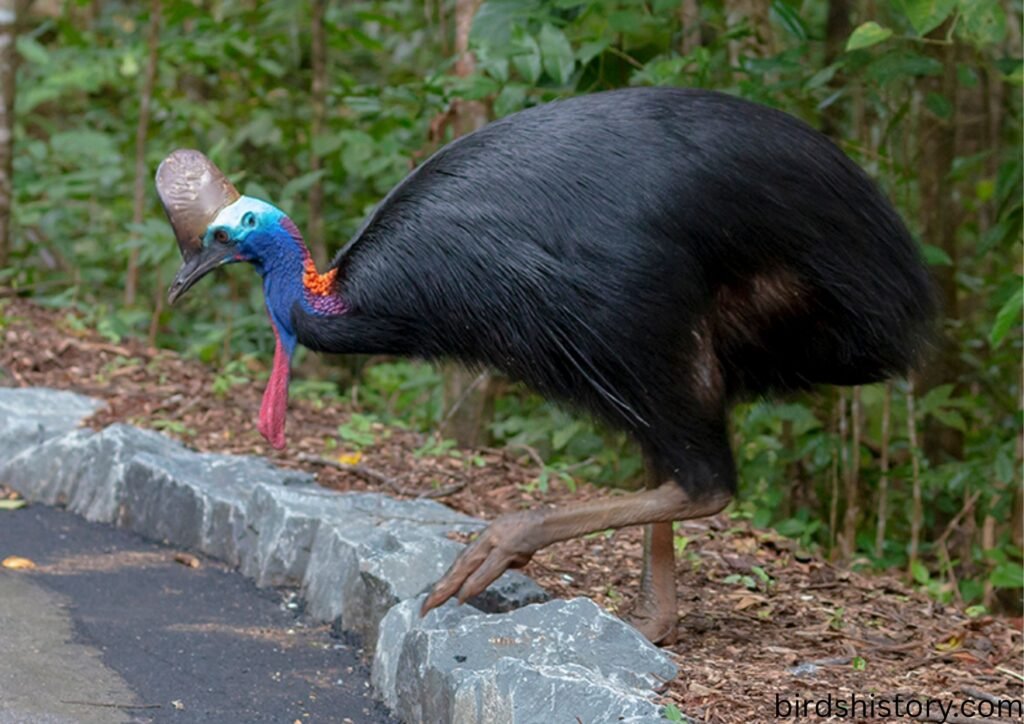
Predators and Threats
Natural Predators
- Given their large size, adult cassowaries have very few natural predators.
- Eggs and chicks may be preyed on by reptiles, feral pigs, dingoes, and large raptors.
Human-Related Threats
- Deforestation: Clearing rainforests for agriculture and development destroys habitats.
- Vehicle Collisions: Cassowaries often wander onto roads in search of food.
- Dog Attacks: Domestic and feral dogs kill chicks and sometimes adults.
- Hunting: Traditionally hunted in New Guinea for meat and feathers.
The greatest modern threats are habitat loss and road accidents, especially in Australia.
Conservation Status
- IUCN Red List: Vulnerable
- Australian Population Estimate: Fewer than 4,000 individuals.
- Global Population: Stable but fragmented across different regions.
Conservation Efforts
- Protected Areas: National parks in Queensland and New Guinea safeguard habitats.
- Awareness Campaigns: Educational programs teach locals and tourists about cassowary safety.
- Wildlife Corridors: Efforts are underway to reduce roadkill by creating cassowary crossings.
- Research: Ongoing studies on cassowary seed dispersal help highlight their ecological importance.
The Southern Cassowary is considered a flagship species for rainforest conservation in Northern Australia.
Interesting Facts
Here are some lesser-known but fascinating details about the Southern Cassowary:
- It is the second heaviest bird in the world after the ostrich.
- The cassowary’s casque grows continuously throughout its lifetime.
- Cassowaries can swallow fruits the size of a large apple whole.
- They produce infrasound calls below the range of human hearing.
- Their kicks are powerful enough to injure or even kill predators.
- Cassowary droppings can contain seeds from more than 50 plant species.
- In some Aboriginal myths, the cassowary is considered a sacred bird.
- Fossils suggest cassowaries have existed for millions of years.
- Cassowaries have excellent memories and can recognize familiar humans.
- Despite their reputation, cassowaries usually avoid confrontation unless threatened.
Conclusion
The Southern Cassowary is much more than a “dangerous bird.” It is a rainforest guardian, seed disperser, and a living link to prehistoric times. With its striking appearance, unique parenting behavior, and ecological importance, it deserves admiration and respect.
But this bird’s survival depends heavily on conservation efforts—protecting habitats, reducing human-wildlife conflicts, and raising awareness. Protecting the cassowary also means we are protecting the tropical rainforests where it lives.
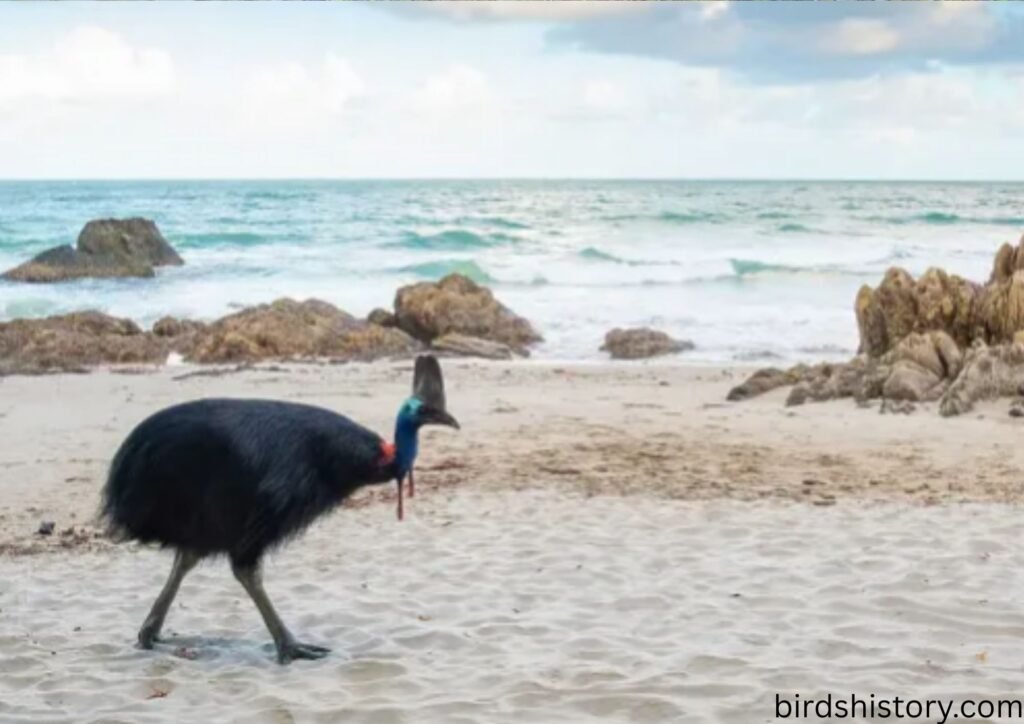
FAQs
1. Why is the Southern Cassowary called dangerous?
Because of its dagger-like claw and powerful kicks, though it attacks humans only when threatened.
2. Where is the Southern Cassowary found?
Northern Queensland in Australia, New Guinea, and nearby islands.
3. How tall can a cassowary grow?
Up to 2 meters (6.6 feet).
4. What does a cassowary eat?
While their diet consists mainly of fruits, they also consume fungi, small animals, and dead flesh.
5. Who takes care of cassowary chicks?
In many bird species, it’s the father’s job to sit on the eggs until they hatch and then look after the baby birds.
6. How long can cassowaries live?
Around 40–50 years in the wild.
7. What is the casque used for?
Possibly for communication, protection, or dominance displays.
8. Are cassowaries good swimmers?
Yes, they are excellent swimmers and can cross rivers and seas.
9. How many eggs do cassowaries lay?
Usually 3–5 eggs per breeding season.
10. Why are cassowaries important to the rainforest?
They disperse seeds of many large-fruited plants, keeping ecosystems healthy.
